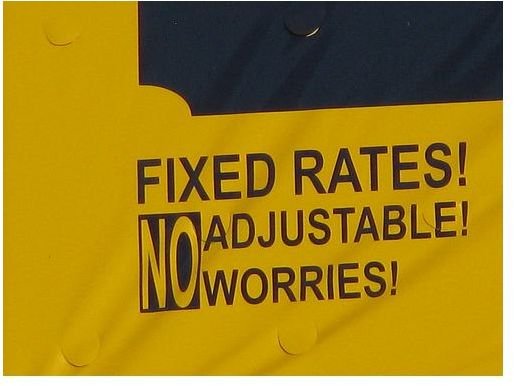How does an Adjustable Rate Mortage Work?
Most borrowers do not understand how an adjustable rate mortgage works. Adjustable rate mortgages, or ARMs, do not have a fixed interest rate; instead, the interest rate fluctuates in relation to an index. This makes it impossible to predict future mortgage payments and some borrowers may face a situation where the monthly mortgage payments are more than they can afford.
How does an Adjustable Rate Mortgage Work?
As mentioned earlier, the interest rate for an adjustable rate mortgage varies in accordance with a chosen index. Some of the common indexes on which lenders base their ARM rates are, the rates on one year constant-maturity Treasury (CMT) securities, the Cost of Funds Index (COFI), and the London Interbank Offered Rate (LIBOR). Sometimes lenders may base the ARM rates on their own cost of funds rather than using an index. Lenders typically add a margin as their share of profit to the index rate for calculating the rate of the ARM.
Interest rate risk is one of the major risks associated with lending for lenders. For example, the lender will have to bear a higher cost of funds if the interest rates go up in future for a six percent fixed rate mortgage. In the same way, the lender will benefit if the rates go down.
In a fixed rate mortgage, which is another type of home mortgage, the lender is bearing the interest rate risk while in an adjustable rate mortgage, the risk is transferred to the borrower. The lender compensates for the higher risk by offering a lower initial interest rate for an ARM. Subsequently, the cost of borrowing for the borrower may be lower during the initial period.
Most lenders offer an initial teaser period during which the interest rate and the monthly payments will be considerably lower than the actual rates. This has led to some predatory lending practices where loan officers and mortgage brokers quote the interest rates in the initial teaser period for attracting borrowers. The naive borrower will go for the adjustable rate mortgage not realizing that he may be in for a payment shock when the teaser period is over. The teaser period can last anywhere between one month and five years.
How to Make the Most of an Adjustable Rate Mortgage?
Although the adjustable rate mortgage is inherently riskier than a fixed rate mortgage, and most borrowers are better off with an FRM, there are some instances where taking an adjustable rate mortgage will be the better option. One case is when the borrower does not intend to stay in the home for more than five years. Since teaser periods typically last for five years, he can sell off the house and close the loan before the teaser period is over, thus benefiting from the lower initial interest rates.
Although it sounds like a fantastic idea, a few words of caution are in order. For one, some adjustable rate mortgages may have a prepayment penalty clause, which forces the borrower to pay a penalty if the loan is closed early. Also, as the recent slump in the housing market has made painfully clear, there is no guarantee that the borrower can sell-off the house or refinance before the teaser period ends. If he is unable to close the loan before the teaser period, the monthly mortgage payments may balloon to more than he can afford. Read seven questions to ask a mortgage lender to know what every borrower should ask a lender before choosing a home mortgage.
An ARM will be the better choice if the prevailing interest rates are high and they are expected to go down in future. A borrower with an adjustable rate mortgage can enjoy the lower interest rates without refinancing when rates go down. In another scenario, borrowers whose income is expected to increase substantially in future can make use of the lower initial monthly payments to qualify for a higher loan amount.
Types of Adjustable Rate Mortgages
There are different versions of adjustable rate mortgages; the three most common ones are Hybrid ARMs, Interest-only ARMs and payment-option ARMs. A Hybrid ARM, as the name indicates, is a mix of a fixed rate mortgage and an adjustable rate mortgage. Just like an FRM, the interest rate remains unchanged for an initial period but after that the rate fluctuates like an ARM. Interest-only ARMS allow a borrower to pay only the interest for an initial period. The loan amount remains the same during this initial period as there are no contributions to the principal portion of the loan. After the initial interest-only period, the monthly payments will increase and will cover both the interest and the principal. A payment-option ARM gives the borrower the choice of choosing a payment type, which can be traditional payment, interest-only payment or a minimum payment, which can be less than even the interest due that month.
So how does an adjustable rate mortgage works? Knowing how an ARM works is really important because sometimes one can pay a price for ignorance. Most often, consumers are easily lured into fancy mortgages they do not understand, when the frill-free fixed rate mortgage will suit them just fine. Adjustable rate mortgages are more suitable for savvy investors who understands the concept of an ARM.
During the housing bubble, lenders introduced fancier mortgages like interest-only and payment option mortgages without considering whether the borrowers could repay them, and borrowers took mortgages they could not afford thinking that home prices would go up forever. As the recent wave of foreclosures and short sales has shown, lenders as well as the borrowers paid a price for their greed and folly.
Resources
- Consumer Handbook on Adjustable Rate Mortgages by The Federal Reserve Board , https://www.federalreserve.gov/pubs/arms/armsbrochure.pdf
- Article on Adjustable Rate Mortgage in HUD Web site, https://www.hud.gov/offices/hsg/sfh/ins/203armt.cfm
Image Credit: Photo by TheTruthAbout, https://www.flickr.com/photos/thetruthabout/3189820973/
